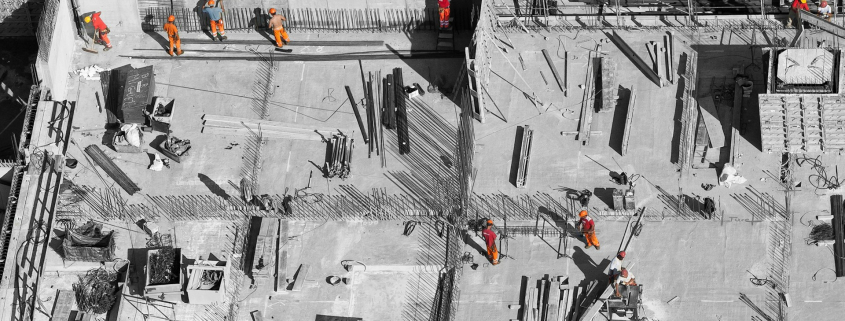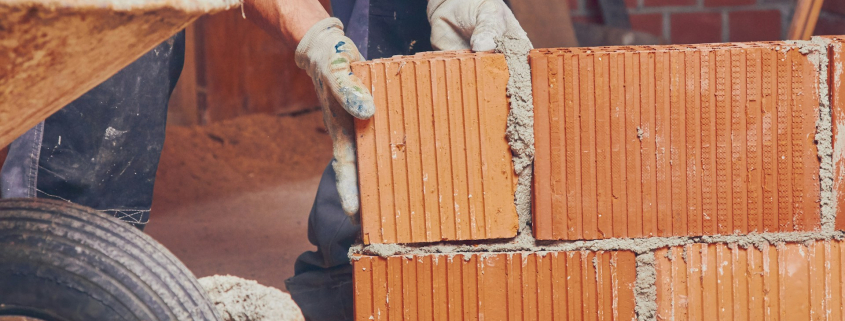Reducing waste in commercial building projects is more important than ever. Builders face the challenge of handling materials responsibly while maintaining high-quality standards. Minimising waste starts at the planning stage and continues through the entire construction process. By focusing on efficient design, builders can make a difference from the very beginning.
Using sustainable materials is another essential step. Opting for recycled and reusable resources benefits both the environment and the project budget. Sourcing materials locally also cuts down on emissions and supports local economies. Every choice made can significantly impact waste reduction and sustainability.
Managing waste on-site properly is vital. Implementing recycling programmes ensures materials are reused wherever possible. Training workers to be mindful of waste reduction can lead to more efficient practices and outcomes. Technology offers further advantages by improving resource management and reducing energy consumption. Overall, these strategies help create a cleaner, greener building industry and contribute to a more sustainable future. With careful planning and the correct steps, commercial building projects can become significantly more eco-friendly and cost-effective.
Planning and Design Efficiency
Efficient planning and design are crucial steps in reducing waste in commercial building projects. The process begins with accurate material estimation. This involves determining the exact amount of materials needed to avoid excess ordering. When the estimation is precise, it minimises leftovers and reduces costs. Builders should work closely with designers and architects to ensure a detailed plan is developed before construction begins.
Another approach to enhancing efficiency is using modular and prefabricated components. Modular construction involves assembling sections off-site and then transporting them to the construction location. This method reduces on-site waste significantly since materials are cut and prepared in a controlled environment. Prefabricated components also allow for better quality control, which can lead to fewer mistakes and less need for remodelling.
These practices not only help in managing waste but also contribute to faster construction times. By incorporating them into the planning phase, builders can achieve substantial waste reduction. These efficient methods streamline the building process and lead to more sustainable construction practices.
Sustainable Material Choices
Choosing sustainable materials is a key element in reducing waste. Recycled and reusable materials, such as reclaimed wood, recycled steel, and recycled glass, are excellent choices. These materials conserve natural resources and often come with a smaller carbon footprint. Using recycled materials decreases the demand for new products, which impacts waste from production.
Another sustainable choice is sourcing materials locally. By doing so, transportation emissions are reduced, supporting environmental health. Local sourcing also bolsters the local economy, providing jobs and strengthening community ties. Additionally, products sourced nearby are typically better suited to local conditions, which can increase the durability of the building and reduce future maintenance waste.
When planning a construction project, consider the advantages of choosing sustainable materials:
– It helps conserve natural resources.
– It often leads to lower emissions.
– It supports local businesses and economies.
By prioritising sustainable material choices, builders can significantly lower the environmental impact of their projects. These decisions are crucial for transforming construction practices and making them more environmentally friendly. When sustainability is a primary focus, waste reduction becomes a natural part of the construction process.
Waste Management on Site
Effective waste management on site is essential for reducing environmental impact and improving efficiency. One practical approach is to implement recycling and composting programmes. By separating recyclables such as metal, plastic, and paper, builders can ensure these items are appropriately processed instead of ending up in landfill sites. Composting organic waste, like wood scraps and food remnants, can also be beneficial, turning potential waste into useful materials.
Training workers is vital to maximise these programmes. Workers need to understand the importance of waste reduction and how their actions contribute to this goal. Providing on-site training sessions can equip them with the knowledge and skills to manage waste effectively.
Some tips for managing waste on site include:
– Clearly label recycling and composting bins.
– Conduct regular waste audits to track progress.
– Encourage continuous education about sustainable practices.
Through structured waste management and worker education, commercial building projects can significantly decrease their waste output, contributing to a cleaner and more sustainable environment.
Leveraging Technology
Technology offers powerful tools for reducing waste and enhancing efficiency in commercial building projects. Using digital tools for resource management allows builders to track material use and waste generation. This real-time monitoring helps identify areas where waste can be reduced and resources can be utilised more efficiently.
Furthermore, technology aids in monitoring and reducing energy consumption. Smart meters and energy management systems provide insights into energy use patterns, helping teams develop strategies to minimise energy waste. These tools not only help conserve energy but also benefit the environment by reducing carbon emissions.
Benefits of leveraging technology in construction include:
– Improved tracking of materials and resources.
– Lower energy costs through efficient energy use.
– Enhanced decision-making based on real-time data.
By harnessing technology, builders can take meaningful steps towards waste reduction and sustainability, ensuring their projects meet modern environmental standards.
Conclusion
Reducing waste in commercial building projects demands a comprehensive approach. From planning and design to on-site management and technology, each phase plays a critical role. Incorporating accurate material estimation and using sustainable materials are foundational steps. Also essential is fostering a work environment focused on waste management through recycling and worker training. Finally, leveraging technology can significantly amplify these efforts, providing data-driven insights and more efficient resource use. Together, these strategies offer a clear path to minimising environmental impact and creating cost-effective, sustainable building practices.
Looking to make your next commercial construction project more sustainable? Greg Clark Building is here to help you implement effective waste reduction strategies. Our team’s expert construction services ensure your project not only meets your goals but also contributes positively to the environment. Reach out to us today to start building a greener future.



